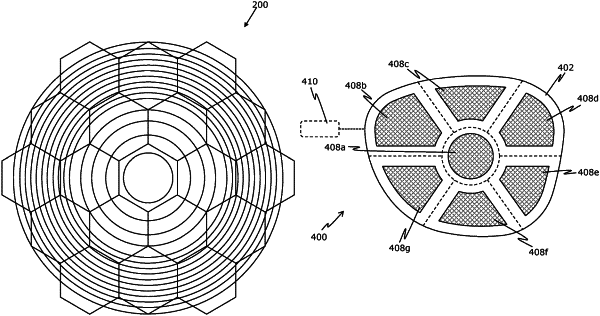| CPC G02C 7/083 (2013.01) [G02C 2202/20 (2013.01)] | 21 Claims |

|
1. An active optical element comprising:
at least a first substrate and a second substrate, the first substrate and the second substrate being optically transparent;
an active material encased between the first substrate and the second substrate;
at least one first electrode deposited on the first substrate and disposed between the first substrate and the active material, the at least one first electrode being optically transparent;
a plurality of second electrodes deposited on the second substrate and disposed between the second substrate and the active material, the plurality of second electrodes being optically transparent, wherein the plurality of second electrodes are to be employed as a ground plane of the active optical element, the plurality of second electrodes dividing the active optical element into a plurality of segments; and
means for applying and modulating an additional impedance between an electrical ground and the plurality of second electrodes, wherein the plurality of second electrodes are connected to the electrical ground via said means,
wherein:
an entirety of the at least one first electrode is driven at: at least one given voltage that corresponds to a given optical power to be produced in at least one of the plurality of segments of the active optical element,
said means is driven to selectively connect at least one of the plurality of second electrodes corresponding to the at least one of the plurality of segments in which the given optical power is to be produced to the electrical ground without any additional impedance, while applying and modulating the additional impedance between the electrical ground and a remainder of the plurality of second electrodes,
the active material in the at least one of the plurality of segments is controlled by a potential difference generated between the at least one given voltage and the electrical ground to produce the given optical power.
|